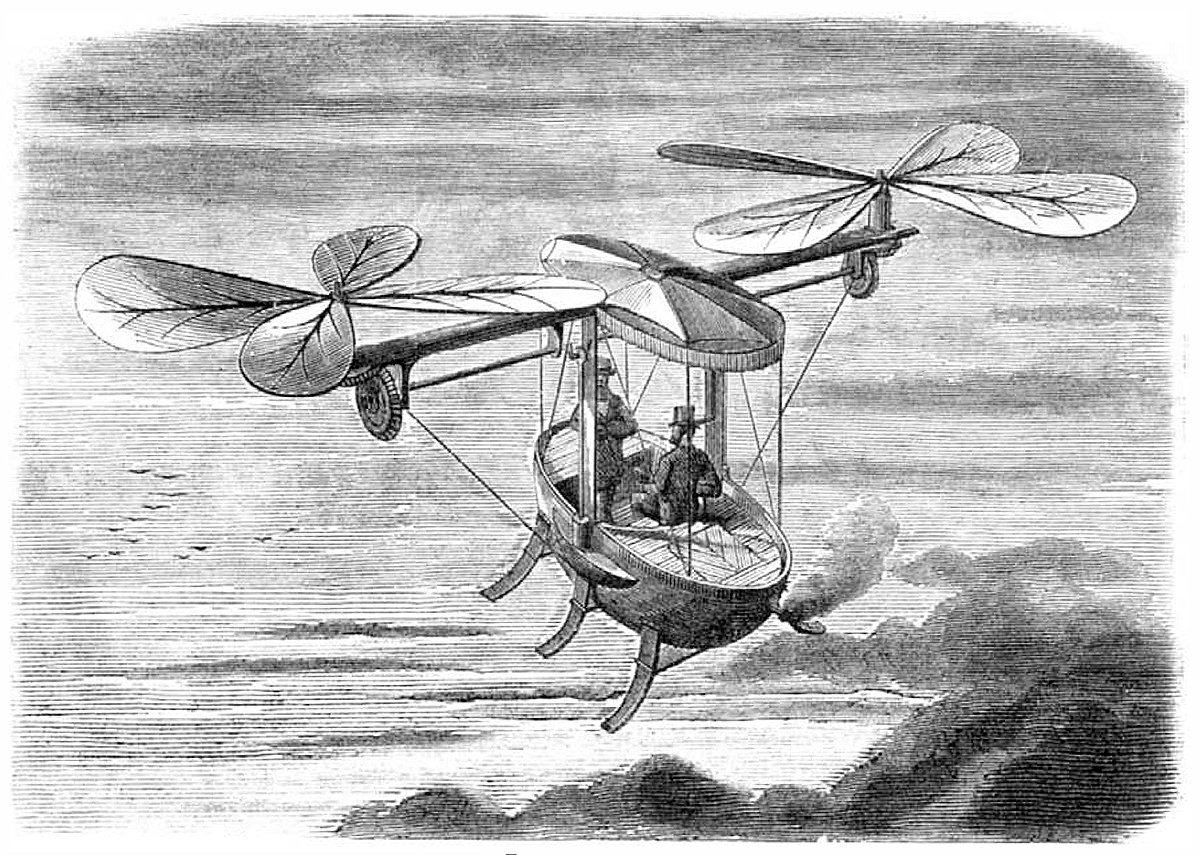A Proposed Flying Machine
Pictured above is a proposed flying machine from an 1874 issue of Scientific American. The author is known only as W.D.G., and he wrote a detailed description of his machine to go along with the illustration shown here. Curiously, the description begins with this statement: Cannot we arouse a little more spirit and inquiry regarding the subject of a practical flying machine, and keep the ball rolling until the aim is accomplished? This call-to-arms seems misplaced, since there were plenty of designs for flying machines proposed around this time (W.F. Quinby, Félix du Temple, Vincent de Groof and Thomas Moy all made proposals within a year of this). Perhaps the author wasn’t satisfied with the progress being made, or perhaps he was trying to set his design apart from the others. Either way, it’s a bold statement to say this is more spirited than the others.
The flying machine features a pair of large, horizontally-mounted propellers. These propellers would spin to create the required lift, and would pivot forward and backward to provide directional control. If the propellers pivot together, the machine will fly in that direction. If they pivot in opposite directions, the machine will turn. This works on a conceptual level, but the wind and noise from the propellers would create absolute chaos for anyone aboard the craft. It would also need to be quite bottom-heavy to avoid turning over when the propellers pivot together. Because of this, I can’t see it being successful, but respect to the inventor for putting the idea out there.
Read more about other ideas for flying machines here.
Quotes and illustration taken from W.D.G.. ”A Flying Machine.” Scientific American Volume XXXI, no. 23 (5 December 1874): 357.

